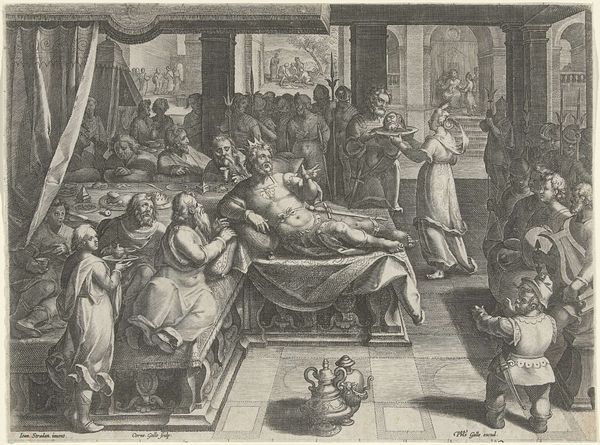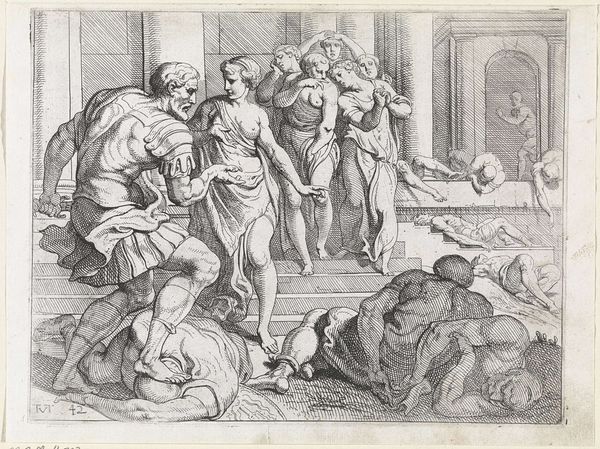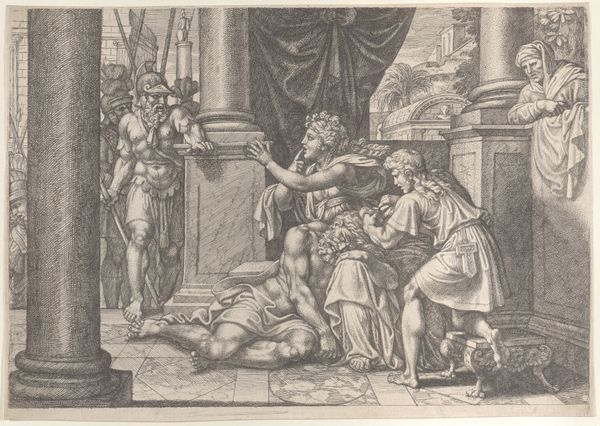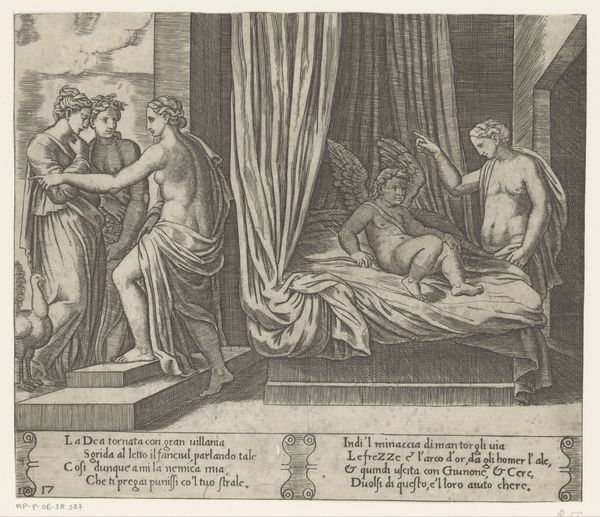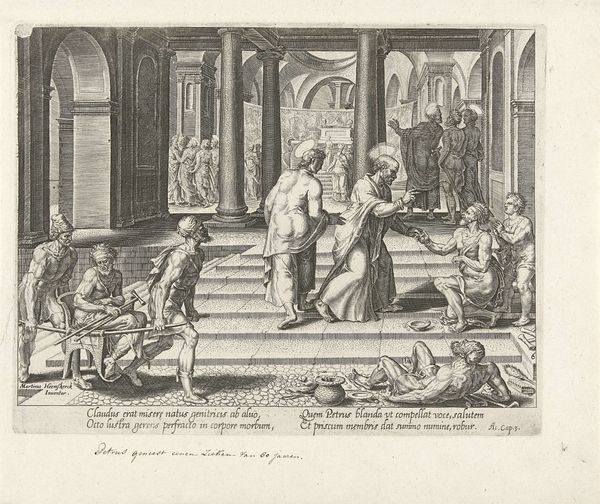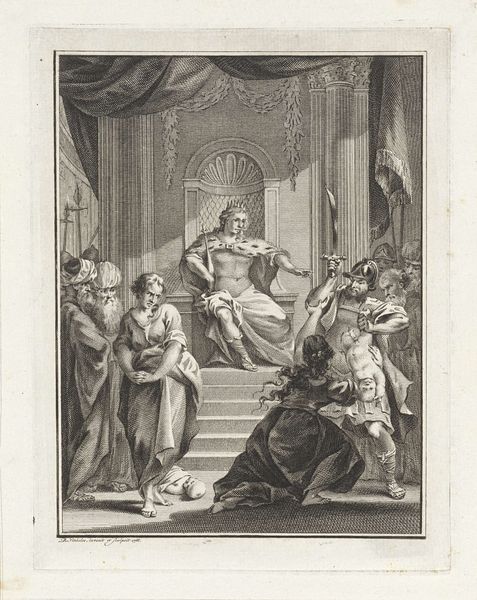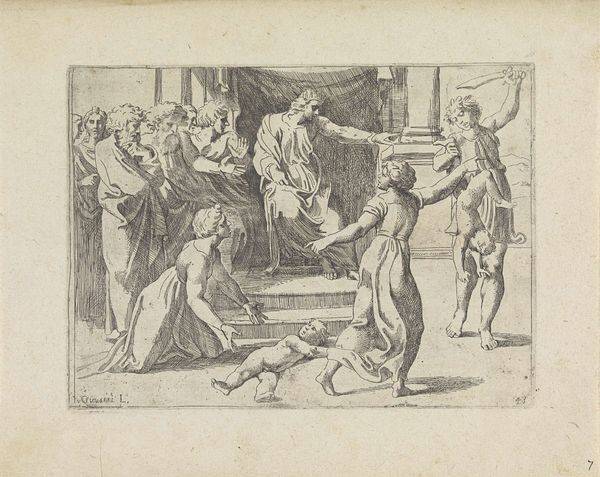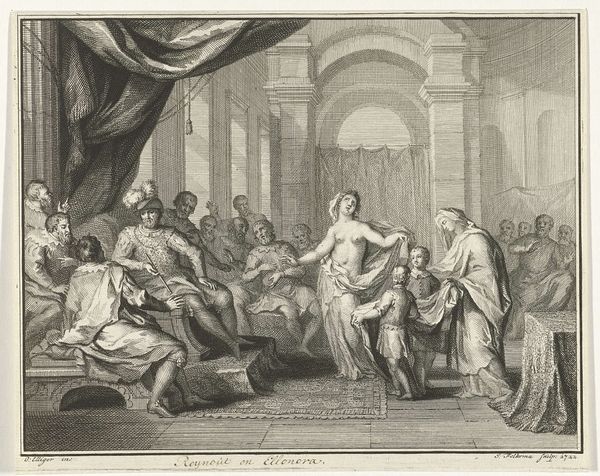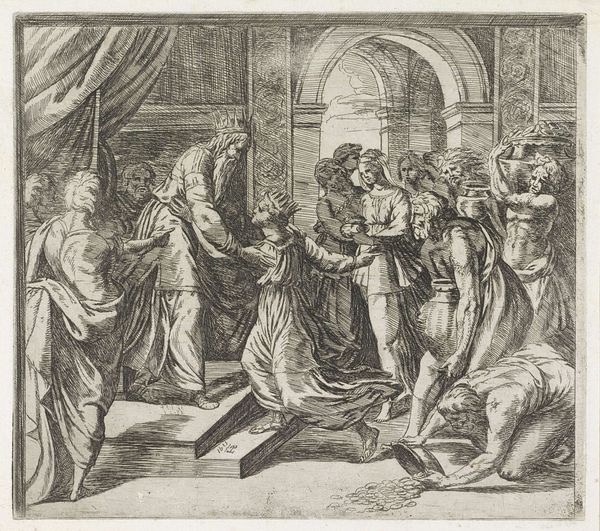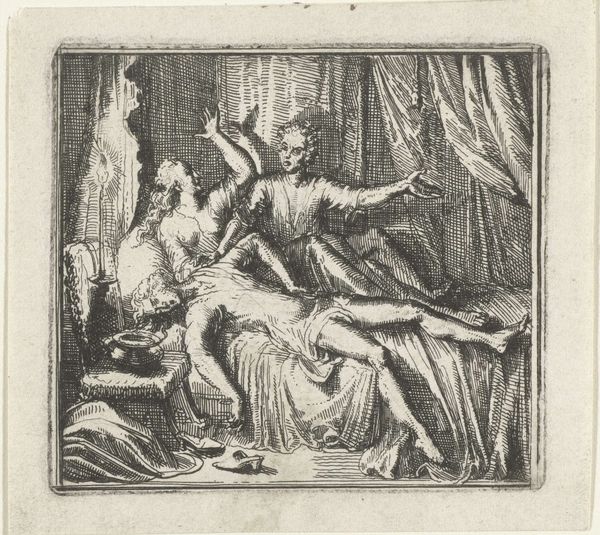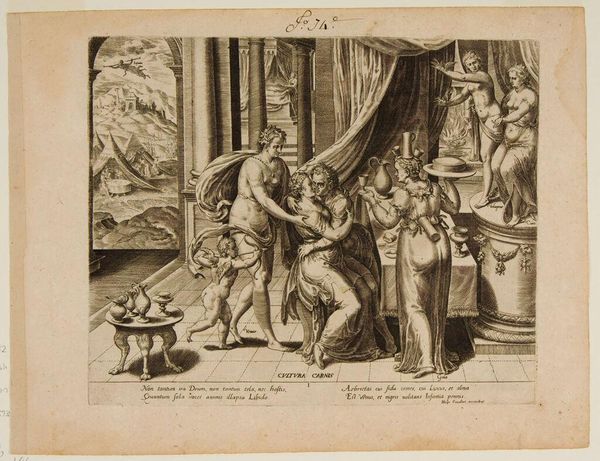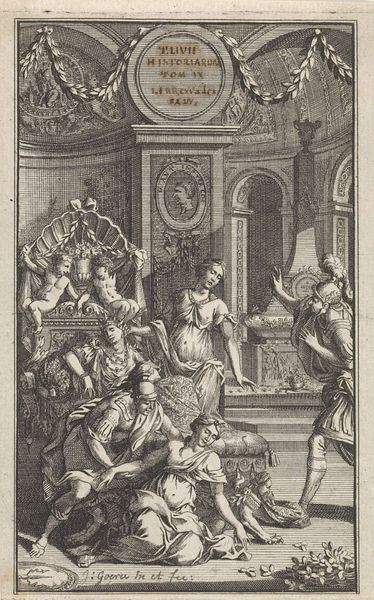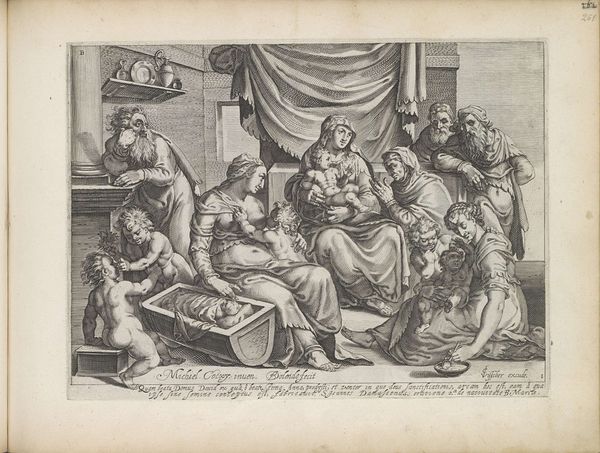
engraving
#
portrait
#
baroque
#
figuration
#
history-painting
#
engraving
Dimensions: height 186 mm, width 245 mm
Copyright: Rijks Museum: Open Domain
Curator: What a fascinating study of line! In Theodoor van Thulden’s engraving, “Odysseus vertelt van zijn avonturen aan Penelope,” made circa 1632, the composition is masterfully structured despite the tonal uniformity. Editor: Indeed. My first impression is a kind of tense stillness—a visual representation of breathless anticipation hanging in the air. Is that skepticism I detect on Penelope's face? Curator: The tension is palpable. Observe how the linear perspective directs the eye towards the background figures, subtly amplifying the foreground drama. The repeated curves and folds of fabric create rhythmic patterns. Editor: Absolutely. Those classical drapes—they seem to mimic and amplify the psychological currents running through the scene. This engraving captures Odysseus’ return, that potent image of homecoming, love, and revelation, resonating across millennia. And Penelope—eternal symbol of faithfulness! I’m curious about that open doorway. What narrative threads does it suggest? Curator: Functionally, it expands the depth of field. Aesthetically, it serves as counterpoint to the bedchamber where Odysseus and Penelope are, underscoring with its classical detailing the gravity of the space, in juxtaposition to the other figures depicted on the steps within. Editor: So, it’s like a gateway to public life contrasted against the intimate revelation in the bedchamber. Note how that attendant figure gestures—seemingly indicating other members of the court and thus Odysseus's reclaiming of his kingdom. You know, those repeating female figures in the background are also interesting; one feels, unconsciously, that perhaps these women serve as symbolic guard against those pressing political intrusions… the implied coup that almost came to pass when Odysseus was thought to be lost forever at sea. Curator: It provides, in a nutshell, an ideal synthesis of classical aestheticism, technical precision and potent symbolic language, making it more than the sum of its representational parts. Editor: The artist uses the iconography, combined with a skilled deployment of compositional structures to provide both narrative depth and an appeal that lasts until today!
Comments
No comments
Be the first to comment and join the conversation on the ultimate creative platform.
